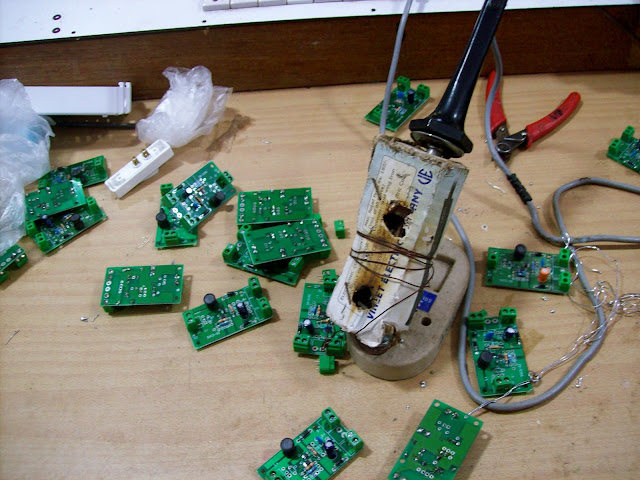A few of my girl friends and I met up to go try on saris. A sari, to my surprise, is just a piece of cloth. It's made into a dress by lots of intricate folding and pinning. I have yet to buy one....they range from $30 (2,000 rupees) to upwards of $1000 (50,000 rupees) depending on the quality of cloth and detail of embroidery.
Some pastoralists grazing their herds of sheep and goats in Laporiya village in Rajasthan.
Solar panels cookers made by rural women in Tilonia village at the Barefoot college in Rajasthan. Illiterate and semi-literate women know how to make these machines from scratch without any scientific knowledge. These metal-boxes in front of the panels collect the heat and are used as stoves to cook on. It is cost effective because it requires no fossil fuels to purchase to use. It is more environmentally-sustainable because it requires no firewood to be collected and burnt (an already rare resource in Rajasthan.) It is hygienically-sustainable because it provides a clean environment for women (who mainly do the cooking) to work. Indoor air pollution from burning wood in confined kitchens with little air circulation is a big problem for these village women as it causes health problems (asthma and other respiratory issues.) It is a time-efficient system because it allows the women to multitask and engage in other productive activities rather than 1.) having to stay in one place to tend the stove fires or 2.) having to spend a lot of their time collecting firewood for the stoves.
These cooks automatically track the sun throughout the day and move to get as much sunlight as possible. The coolest!
A woman demonstrating how much heat the cookers generate. She lit a piece of newspaper on fire in 5 seconds. According to the woman, the solar-cookers require less time to cook foods than pit fires do.
Women constructing some of the parts of the solar cookers. They're able to make these complex structures without any formal engineering knowledge.
This part of our "tour" was probably the most interesting. This photo is of college's raining school for women from all over the globe (Sudan, Haiti, Iran, Guatemala) to learn how to make solar panel parts to generate electricity. Barefoot college identifies communities in other countries that don't have adequate electricity and reaches out to women from these places to come to the college to teach them technical skills for 6-months. With these new skills and tools (mainly focuses on solar-power electricity,) the women leave the training with the capacity to return to their communities and train others to help provide electricity for their communities.
Cotton loom.
The famous Gandhian charkha wheel! During India's fight for independence from the British Raj in the 1940's, Gandhi stressed the importance of self-reliance among all Indians. He wanted all people to use the charkha as a means to unite the country with this one goal- self sufficiency.
Upcycled* paper decorations. They also made toys, notebooks, and containers from waste products (matchbook boxes, toothpaste containers, newspapers.)
* Upcycling is different from recycling because the waste-products aren't changed into other forms, they're wholly-integrated into a new product. It's a really creative way to make use of your waste!
The process of making sanitary napkins. Sanitation and hygiene is a key focus of Barefoot college.
Each woman makes over 300 sanitary napkins a day. They provide them to the college community and also sell them to local distributers for profit.
Cotton bale for sanitary napkin-making.














No comments:
Post a Comment